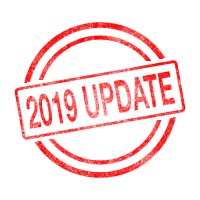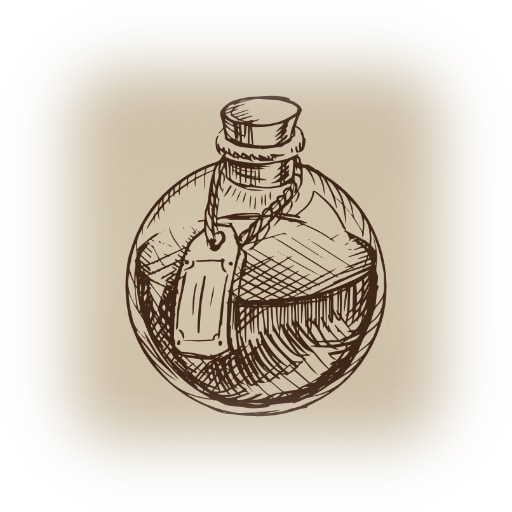Introduction

The weekend before Halloween in 2018, my partner Christine Rose and I hosted a magical potions-themed party. It was just under 3 months in the making — from prototyping a magnetically-activated animated lock to having professionally laid-out spellbooks and handcrafted “magic” cabinets dispensing test tubes of alcohol. This website is an attempt to catalog the various regions of the party and document each of the magic elements we designed for the area. Techies should be able to find all of our source files by following links in the “Tech Stuff” section below.
While we can take credit for the props, gadgets, and drinks, all credit for inspiration goes to a bar called The Cauldron. This was vaguely on our radar due to an article floating around our Facebook friends. Christine annually summers in London, so had a chance to visit. At the time, it was only a short-run pop-up bar, so I did not get to see it during my visit. (I’ve since learned that they set up permanent locations in London and New York.) We started scheming about bringing a similar experience to our friends here in Portland the day after her visit. The following weekend, I had the prototype cabinet latch servo, and it expanded from there.
The evening of the party, wizards would arrive via the Muggle entrance of the house. In The Common Room, they receive their wand and potions textbook. From there, they could socialize, slink off to find a quiet space in The Forbidden Forest, or pass through the food spread in The Great Hall on their way to The Potions Classroom to mix some drinks.
 This symbol indicates a change to the 2019 run of the party.
This symbol indicates a change to the 2019 run of the party.
Tech Stuff & Fine Print:
Almost all of the source material for this party are available from the GitHub project, which is on the navbar to your left (on a desktop-sized browser). The only exception are the raw video, Apple Motion projects, and Final Cut Pro X projects, partly due to the size of the raw video and partly out of respect for our (over-)acting friends.
A lot of the source files are in Affinity Designer and Affinity Publisher. These are Mac-specific equivalents of Adobe Illustrator and Adobe In-Design, but far less costly, and take advantage of MacOS and Mac hardware acceleration. We’ve also put the “rendered” equivalents in source control as well: the exports in PDF, SVG, or whatever is appropriate. Those are not as editable as the originals, but are far more accessible to far more platforms.
Hardware covers the cross-discipline gambit, including a Glowforge laser cutter for wood, acrylic, and cardboard, the Cricut Maker precision cutter for vinyl and fabric, and my electronics lab for the gadgets.
